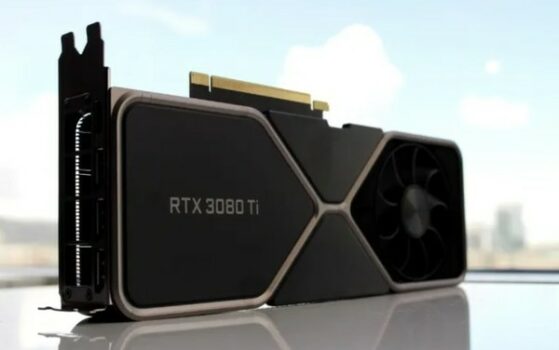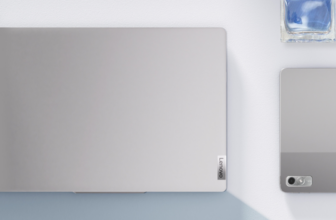Nvidia and AMD are the best graphics card suppliers on the market, but choosing between the two is no easy task. The 2024 Nvidia AMD comparison shows how these two companies have fought fiercely this year, making the decision more complicated than ever before. Unlike in the past, we are no longer as simple as simply counting money when it comes to the 2024 Nvidia AMD comparison.
Foreign media have studied each graphics card released by AMD and Nvidia this generation, not only comparing their basic performance, but also evaluating functions such as DLSS and FSR, ray tracing performance, and the operation of VRAM in modern games.
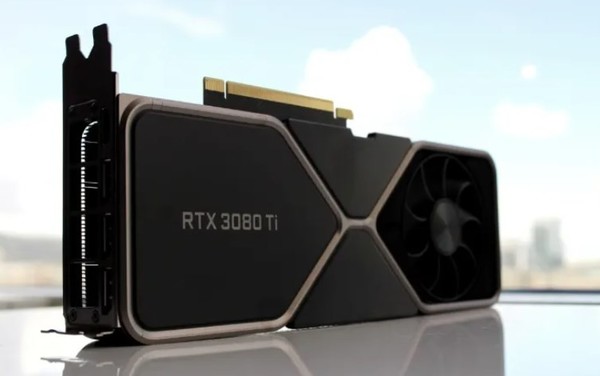
Before this, let’s first understand the basic situation of Nvidia and AMD in 2024. Both have mature product lines and no new products are expected to be released within the year. We look forward to the next generation of graphics cards that will be launched by Nvidia and AMD at the end of the year and early next year.
Nvidia uses Ada Lovelace GPU, which is the RTX 40 series graphics card. There are 10 products in total, but strictly speaking, only 8 of them belong to Nvidia’s current product line. Among them are:
RTX 4090 Series
RTX 4080 Super
RTX 4080 (discontinued)
RTX 4070 Ti Super
RTX 4070 Ti (discontinued)
RTX 4070 Series
RTX 4060 Ti 16GB
RTX 4060 Ti 8GB
RTX 4060 Series
The two GPUs that are absent are the RTX 4070 Ti and the RTX 4080, which have been replaced by Super refresh. The RTX 4070 is the only GPU that has both a Super refresh version and coexists with the new one. Although the RTX 4080 and RTX 4070 Ti have been technically discontinued, you can still find inventory in some channels as of this article.
In addition to the Super refresh, another unique feature in Nvidia’s product line is the RTX 4060 Ti. Nvidia sells two versions of GPU, one is 8GB and the other is 16GB. They are the same graphics card, but the memory capacity is different.
In contrast, AMD has a smaller lineup, with only 7 GPUs, and no Super refresh versions. Here is an overview of the AMD RDNA 3 series:
Rx 7900 xx
RX 7900 XT
RX 7900 GRE
RX 7800 XT
RX 7700 XT
RX 7600 XT
RX 7600
If you stick to a particular brand, you may not always find alternatives to the corresponding performance level. For example, the RTX 4060 Ti is stronger than the RX 7600 XT, and the RX 7700 XT is stronger than the former.
Price and time of listing
It doesn’t make much sense to directly compare the official price of AMD and Nvidia’s current GPUs, because as the product life cycle advances, price changes have led to more direct competition among some GPUs. Here are the prices for each current generation GPU when it is released:
RTX 4090 – USD 2000
RTX 4080 – $1130
RX 7900 XTX — $930
RTX 4070 Ti —$800
RX 7900 XT—$700
RTX 4070-600 USD
RX 7900 GRE—$550
RTX 4070 – $540
RX 7800 XT — $500
RTX 4060 Ti 16GB —$450
RX 7700 XT — $400
RTX 4060 Ti 8GB — $400
RX 7600 XT — $330
RTX 4060-300 USD
RX 7600 —$270
From this, the following general trends can be observed:
First, AMD GPUs are usually priced lower. For example, the RX 7600 is not only the most affordable option in the current product lineup, but models like the RX 7800 XT are also slightly less expensive than the RTX 4070 that competes with.
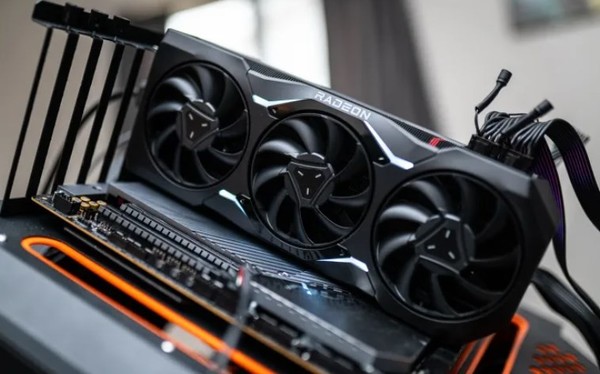
The 2024 Nvidia AMD comparison is not as straightforward as it might seem. While both Nvidia and AMD offer top-tier graphics cards, deciding between them in 2024 requires more than just comparing performance and prices. The 2024 Nvidia AMD comparison goes beyond basic specs, as factors like supply, and demand, and advanced technologies like DLSS and ray tracing also play key roles.
The decision to choose between Nvidia and AMD in 2024 is more complex than just considering the price. While both companies have long been leaders in the graphics card industry, the 2024 Nvidia AMD comparison reveals more subtle differences. These go beyond mere cost, involving performance, features like ray tracing, and technologies such as DLSS and FSR. In this review, we will explore the strengths and weaknesses of both brands to help you make an informed decision based on your needs. Whether you prioritize performance or value, the 2024 Nvidia AMD comparison will provide a comprehensive guide to help you navigate these competing giants.
performance
Since 4K, Nvidia has gained the upper hand in the high-end performance competition. The GPU power of RTX 4090 is unrivaled, making Nvidia stand out. In the high-end market, the RTX 4080 Super surpasses AMD’s direct competitors, but in the range of less than US$1,000, AMD has the advantage. For example, the RX 7900 XT, while priced at $100 less than the RTX 4070 Ti Super, showed stronger performance.
This trend continues at 1440p resolution, especially on the RX 7900 GRE. It beats the RTX 4070 Super $50 and is significantly better than the RTX 4070 at the same price point. Similarly, the RX 7800 XT has a slightly superior performance when it’s about $50 cheaper than the RTX 4070.

Although ray tracing is Nvidia’s traditional strength, AMD’s competitors usually offer better performance at the same price in non-ray tracing games.
However, at 1080p resolution, the situation reversed, which was particularly surprising considering the performance of cards such as NVIDIA RTX 4060. Compared to the RTX 7700 Ti, the RX 4060 XT is a good choice, but at the lower end, the RX 7600, especially the RX 7600 XT is not impressive. At this time, Nvidia’s RTX 4060 and RTX 4060 Ti provide a more balanced choice for 1080p gamers.
Looking at the overall performance, AMD provides a stronger performance between high-end 1080p games and low-end 4K games. Nvidia provides higher peak performance overall and provides higher cost-effectiveness at the bottom of the product line. However, in addition to performance considerations, there are many other factors that need attention.
As for the above, AMD won with better overall performance.
Ray Tracing
Nvidia has been the leader in ray tracing since the release of the RTX GPU in 2018, but now AMD is pressing forward step by step. A key reason is that we are finding that more and more games have lower demand for ray tracing, such as Resident Evil 4, where AMD’s GPUs perform well, far exceeding the level of the last few years.
Data from foreign media tests show that in games like Return and Resident Evil 4 that require low ray tracing, despite the same pricing, the RX 7900 GRE can still surpass the RTX 4070 after turning on ray tracing.
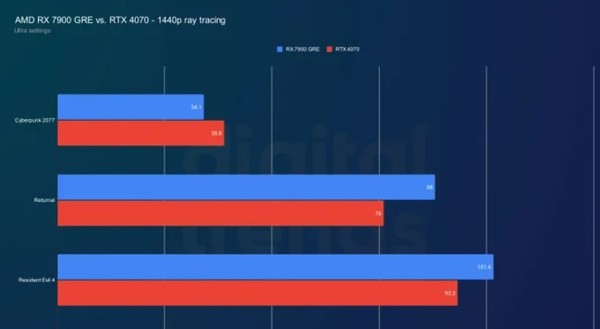
Nvidia is still the only one in games that require extremely high ray tracing. As mentioned earlier, the RX 7900 GRE is approximately 16% faster overall than the RTX 4070, an average that has been included in the ray tracing test results. Despite its significant advantages, Nvidia is still far ahead in Cyberpunk 2077.
Compared with the RTX 4070 Ti Super and the RX 7900 XT, Nvidia’s advantages in ray tracing are still obvious. The two cards win and lose each other in games with lower requirements, but in Cyberpunk 2077, Nvidia continues to maintain a huge lead.
While AMD is quite competitive in some ray tracing games, Nvidia still has the upper hand in this area. Typically, turning on ray tracing has a significant impact on performance. RTX versions of games such as Cyberpunk 2077, Alanwick 2, and Portal present amazing graphics due to the use of sophisticated lighting techniques, while Nvidia is dealing with such high-load scenarios. High-temperature control is better.
DLSS and FSR
An important criterion for judging the quality of GPUs is its additional features. In recent years, both AMD and Nvidia have increased their investment in software levels outside of chips. For AMD, the focus is on FidelityFX super-resolution (FSR), while Nvidia mainly promotes deep learning super sampling (DLSS). There are many differences between the two.
First, look at AMD’s FSR, which contains two parts: one is the upgrade function, which is suitable for any GPU, and improves performance by rendering games at lower resolution; the other is FSR 3, which adds frame generation, which compares two consecutive frames and Generate intermediate frames to increase frame rate, currently only a few games support.

One of the major advantages of FSR is its wide compatibility which is not only suitable for AMD GPUs but also supports Nvidia and Intel products. However, its visual effects are not always the best, as in Horizon: The West, the FSR’s picture is softer than DLSS, especially in the presentation of Aloy’s hair and surrounding vegetation.
Another drawback is that although the frame generation function of FSR 3 has potential, there are only a handful of games currently supported. Although games such as “Cyberpunk 2077” and “Warhammer 40K: Dark Tide” promised to add this feature, it has not been updated yet.
Turning to Nvidia’s DLSS, it includes three major modules: super-resolution, light reconstruction, and frame generation. They are all based on AI technology and need to run on a dedicated accelerator for RTX GPUs. Compared with FSR, DLSS shows stronger detail retention ability and better stability in games such as “Legend of Hogwarts”, especially when dealing with ghosting and flickering problems in subtle areas.
DLSS’s super-resolution and ray reconstruction are suitable for all RTX GPUs, while frame generation is designed for the latest RTX 40 series. Although it is slightly better than FSR 3 in terms of effect, the difference between the two is not big. What makes Nvidia stand out is that DLSS 3 is widely used in many games such as “Alanwick 2”, “Cyberpunk 2077” and “Remnant 2”.
Since the launch of DLSS, Nvidia has always maintained its leading position in AMD in terms of functionality, and it remains the same. DLSS is not only one of the key reasons for purchasing Nvidia GPUs but also a key technical support to ensure the smooth operation of games such as “Alanwick 2” and “Cyberpunk 2077” in strict ray tracing mode.
Software and drivers
In terms of driver support, there is no obvious difference between AMD and Nvidia. In the past, both have had occasional problems in driver releases, but they can be dealt with quickly. Both sides often update drivers simultaneously when new games are released. If you want to compete with a certain game or driver version alone, you may be able to find a temporary winner, but overall, AMD and Nvidia are comparable in driver quality and update support.
The 2024 Nvidia AMD comparison has become a hot topic in the graphics card world. As both companies evolve their offerings, this comparison highlights the strengths and weaknesses of each. In recent years, Nvidia’s unified application has integrated drivers, recommendation settings, game recording, and additional applications such as NVIDIA Broadcast and ICAT, making it a strong contender in the 2024 Nvidia AMD comparison.
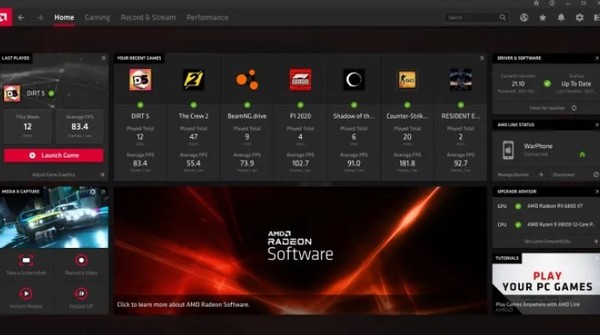
Unlike the old GeForce Experience, using the new NVIDIA app without registering an account can greatly narrow the software level between NVIDIA and AMD.
AMD’s Radeon Software also has a powerful feature set, covering instant playback, screenshots and screen recording, performance monitoring, graphics settings, live streaming GPU overclocking, etc., similar to GeForce Experience. In addition, Radeon Software also provides Integer Scaling to optimize the display of retro games on modern monitors, and AMD Link, allowing users or friends to remotely connect PC to various devices. All AMD gaming technologies, such as FreeSync, Radeon Chill, and Radeon Anti-Lag, can be managed through Radeon Software.
Although AMD has made significant progress with Radeon Software in recent years, Nvidia’s new app has brought it to the forefront. Nowadays, whether you choose AMD or NVIDIA, users can get high-quality and comprehensive services in software experience, which is hard to tell.
GPU
In addition to desktop graphics cards, Nvidia and AMD are also involved in the mobile GPU field, but laptops equipped with Nvidia graphics cards are more common on the market. Similar to the CPU market structure of Intel and AMD, Nvidia has a higher market share in the mobile GPU. The common combination is laptops with Nvidia graphics cards and Intel processors.
It is difficult to generalize the performance comparison between AMD and Nvidia mobile GPUs. For example, the RX 6800M in the Asus ROG Strix G15 outperforms the RTX 3080 in the MSI GS66 Stealth in performance, but this is mainly because the latter does not use the full-power RTX 3080 and has a weak cooling system. Therefore, it is not accurate to assert that AMD is more suitable for mobile graphics cards, and its actual performance is much more complicated than simply comparing the original performance.
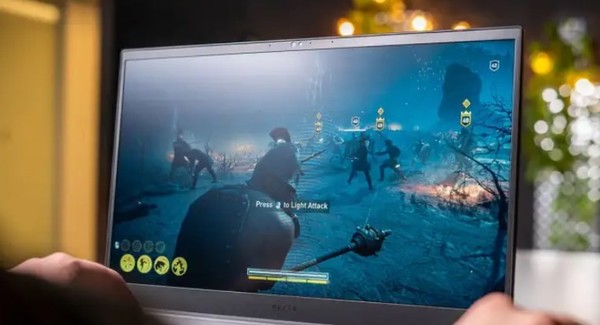
Mobile graphics cards are different from desktop graphics cards, and their power consumption is flexibly set by laptop manufacturers. For example, the power consumption limit of the RTX 3080 in MSI GS66 Stealth is 95W, while the same graphics card in the Razer Blade 3080 can reach 105W, which naturally has better performance. Considering the different cooling solutions of each brand, the comparison between mobile graphics cards has become complicated.
In the face of mobile GPUs, individual notebook evaluation is crucial. Indeed, there are performance differences between graphics card models, such as the RX 6800M being better than the RX 6700M. However, when compared with similar-grade graphics cards, the overall design of the notebook has an impact on performance that is even greater than that of AMD or Nvidia GPU itself.
Finally, don’t forget about DLSS and ray tracing. Nvidia mobile GPU also supports these features, and our conclusions on desktop cards also apply to mobile platforms.
Written at the end
For many years, AMD has been committed to comparing or even surpassing NVIDIA in performance, and the RX 7000 series graphics cards have achieved this goal. So the focus shifted to pricing and functionality. In terms of price, AMD graphics cards are generally lower than similar products of Nvidia. However, given the presence of ray tracing and DLSS technology, Nvidia’s extra expenses seem worth the money.
This does not mean that AMD is the suboptimal choice. In fact, by 2024, AMD has become a more attractive option for years. If you pursue cost-effectiveness, focus on maximizing overall performance, and have low demand for additional functions, AMD is undoubtedly an ideal choice. However, given the high reliance on these features of many games this year, Nvidia stands out in this comparison with its technological advantages and becomes our first choice.
For more insights on graphics cards, visit TinyDeals Blog.
